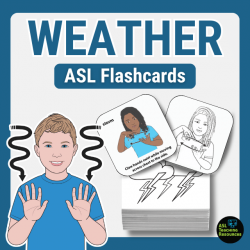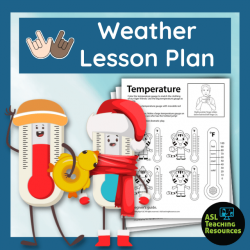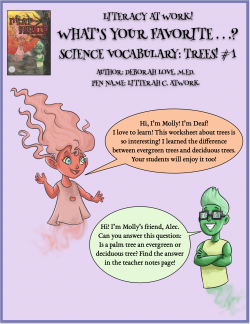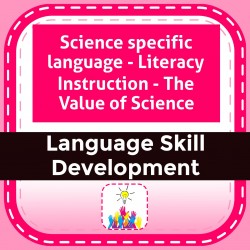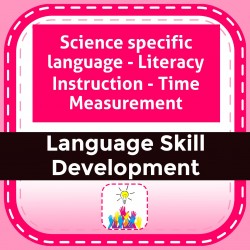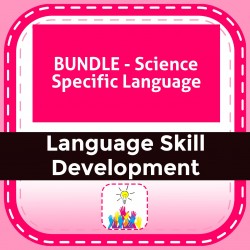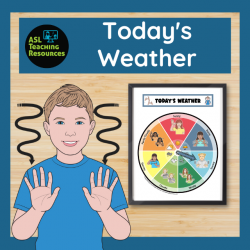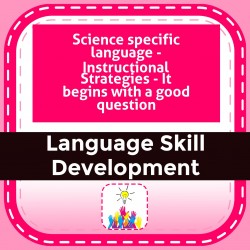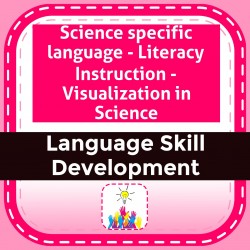Ability Levels
Categories
Resource Types
Age/Grade Range
CCSS
Anchor Standard
Speaking & Listening
Language
Reading
ASL Flashcards – Weather
$ 399
The ASL Flashcards – Weather is an excellent tool to keep your students engaged and learning. ???? Perhaps the best thing about them is the unlimited ways you can use them with your Earth Science Weat
...
ather Unit!These bilingual weather forecast flashcards will help your student learn Sign Language. Perfect for individual and group reinforcement activities.
Temperature Weather Lesson – ASL
$ 399
This Temperature Weather Lesson makes it simple to explain the concept of temperature. Use the 5-day temperature trackers to have your students record the daily temperature in the morning, afternoon,
...
and evening. Students will put their observation skills to the test after the week by answering questions about their temperature trackers. Your learners will utilize their detective skills to connect the temperature gauge to written temperatures, temperature to seasonal clothing, and greater than and less than skills. Don’t forget about the temperature gauge project, in which your students will create a functional gauge that may be utilized with many activities in your weather lessons.
SCIENCE VOCAB: TREES! #1
$ 0
Domain Specific Science Vocabulary: EVERGREEN AND DECIDUOUS TREES!Want a clever way to increase students' science vocabulary? Use this worksheet at any time during the school year or as the holidays a
...
re approaching when decorating a tree is a tradition for many. This worksheet can be used as a warm-up to the school day, in-between activities, for a group of students, or for individuals.In my many years of working as an educational interpreter, I noticed that it was not unusual for deaf and hard-of-hearing students who were behind their peers struggle with answering questions that began with: "What's your favorite . . .?" Often, they would answer "yes" or not be sure how to answer. The beauty of this type of worksheet is that there is no wrong answer, it is short-yet-effective, and it exposes students to a variety of categories and vocabulary within a specific domain. If time allows, it can open up a discussion on the topic. As a bonus, I added an extra page full of discussion prompts and fun facts. Over time, this type of worksheet will help students learn how to answer this common question that seems easy on the surface, but not for those who do not have the background knowledge and vocabulary necessary to answer it.The thumbnail for this “What’s Your Favorite?” series has a violet purple background - violet for vocabulary! Looking for fast and easy vocabulary building worksheets? Look for the violet thumbnails! Like the "What's Your Favorite...?" worksheet series? Leave me a comment so that I know you would like more!Debbie Love, M.Ed.
Science specific language - Literacy Instruction - The Value of Science
$ 195
The
word ‘science’ comes from the Latin word for knowledge – scientia.
According to the Merriam -
Webster dictionary it is ‘knowledge about or study of the natural world based
on fac
...
on facts learned through
experiments and observation.” It is systematic, intellectual, and
practical.
Frequently, the instructional model for children who are deaf or hard of
hearing concentrates on language development and science learning is
considered to be extra. This
instructional material includes a lesson on SOUND as a means to exemplify a science instructional
strategy
Science specific language - Literacy Instruction - Time Measurement
$ 195
Scientific study is the observation and measurement of change. Use these instructional strategies to teach students the basic scientific units of time (standard and metric). Activities include exami
...
ning root parts such as "chrono," " -ology," reading comprehension and critical thinking, and ideas for extension lessons and student research.
Science Specific Language- Instructional Stories-Crayons
$ 195
There are 11 basic color words in the English language: "black", "white", "red", "green", "yellow", "blue", "brown", "orange", "pink", "purple", and "gray". The rest are variations of that color. The
...
se instructional strategies and activities are a great tool to use for understanding color words, the chemistry of color, describing objects, and extending an art or science lesson. These activities could also serve as an introduction to color vocabulary.
BUNDLE - Science Specific Language
$ 795
This BUNDLE of instructional materials for teaching science concepts includes teaching packets on the science of colors, rainbows, asking questions, classifying living things, scientific elements, sta
...
tes of matter, time measures, visualization, and the value of science.
Today’s Weather Chart ASL
$ 299
This colorful Today’s Weather Chart ASL wheel will make tracking weather enjoyable. This set includes everything you and your kids need to learn about the Weather.As you construct your Today’s Weather
...
ther Chart, engage your students in insightful Weather discussions. Students will start to recognize Weather trends and be able to forecast the Weather in the future.
Science specific language - Instructional Strategies - It begins with a good question
$ 195
When you say ‘science’, one thinks of experiments and research. To do research, scientists conduct experiments to answer questions and learn new information. These experiments follow a specific sequen
...
quence of steps called, ‘The Scientific Method’. Use these instructional strategies and activities to help students understand the Scientific Method and how it is applied to science experiments. Activities include determining the difference between a statement and a question, practice writing questions, understanding measurable/ non-measurable information, naming components of an experiment, and conducting an experiment using the Scientific Method.
Science specific language - Literacy Instruction - Visualization in Science
$ 195
What is ‘visualization’ in science? Scientific research uses the words ’visualization’, ‘image’, ‘visual aid’, and ‘visual literacy’ interchangeably. The term ‘visualization’ is defined as the formati
...
s defined as the formation of mental images and as the process of interpreting information in visual terms. It assists with the explaining, developing, and learning of concepts. These instructional strategies and activities will help you help your students with concepts across the curriculum.
 Your browser is out of date. For best experience switch to latest updated Browser.
Your browser is out of date. For best experience switch to latest updated Browser.
 Get Chrome
Get Chrome Get Edge
Get Edge Get Firefox
Get Firefox